An orthopedic mattress for a child is not a luxury, but a necessity. There are a lot of options for orthopedic mattresses on the market, with different prices, from different materials, different appearance and, of course, with different mechanical properties. It is easy to get confused in such a variety. In order to choose a children's mattress that is suitable specifically for your child, you need to consider all the features of this product.
Kinds
All mattresses are divided into two main categories:
- Spring loaded. Inside these mattresses, as the name implies, are springs. Moreover, these springs are of two types: interlinked, or dependent (Bonnel block), and independent - each spring is packaged in a separate case, and reacts to the load independently, regardless of the others. If you prefer spring mattresses, for the crib you need to choose only independent blocks, the “bonnel” has very weak orthopedic properties, and also quickly loses them.
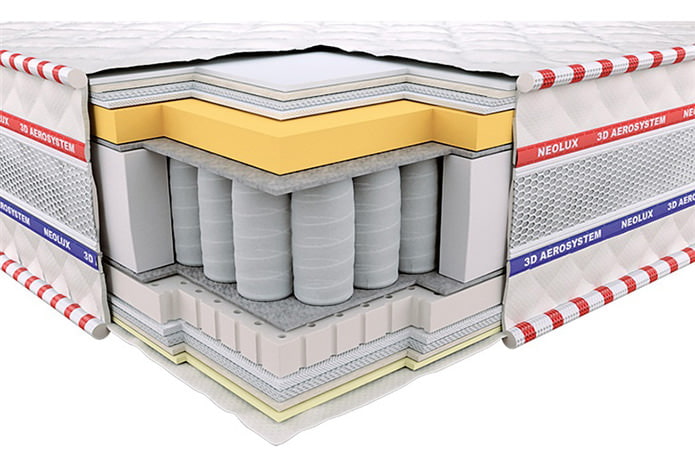
- Springless. As a filler in such a mattress, instead of springs, elastic materials are used, both of natural origin, for example, latex, and artificial. Springless mattresses last longer than spring mattresses, have a wide gradation of degrees of rigidity and pronounced orthopedic properties. Pediatricians recommend them as the best option for babies from the first day of life.
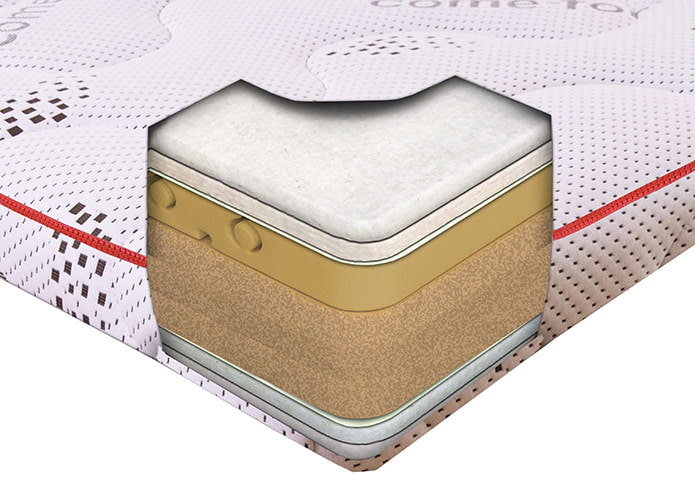
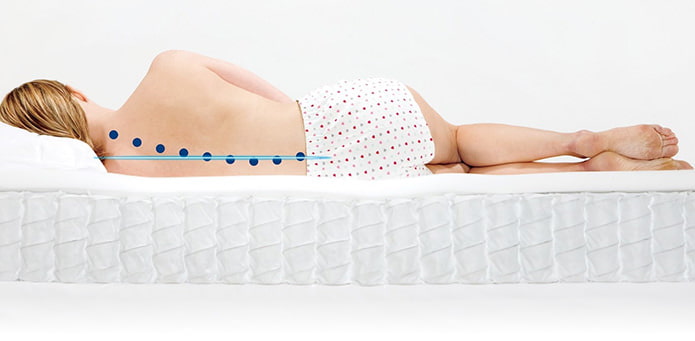
Filler
When choosing a baby mattress, one of the most important issues is the choice of filler. The filler material can be different, sometimes very exotic, but the following are most widely used:
- latex;
- coconut (coir, shavings, fibers);
- buckwheat husk;
- polyurethane foam;
- thermal fiber;
- combined materials polyurethane foam-coconut, latex-coconut);
- linen;
- cotton;
- seaweed.
As a rule, for the manufacture of a mattress, not one material is used, but their combination. To choose a children's mattress with the right filler, you need to make sure that it provides sufficient orthopedic support. In principle, all of the above fillers have the necessary qualities, but in some they are more pronounced.
Coconut fiber, for example, has lignin in its composition - this is a natural elastic substance that allows coconut fibers to evenly distribute mechanical stress, and also protects them from moisture and prevents putrefactive processes. Another excellent property of such fibers is a sufficiently large distance between them, which allows it to “breathe” and easily ventilate. In hot weather, such a mattress will not be stuffy, and in winter it will be cold.

Artificial filler a mattress for a baby bed in some cases works no worse, but better than other natural materials, so there is no need to be afraid of them. Modern polyurethane foam (PUF), modified with various additives, “breathes” perfectly, keeps its shape well, is durable, environmentally friendly, non-combustible, it does not cause allergies. In addition, PPU may also have special properties that are not characteristic of natural materials, for example, a memory effect, which makes sleeping on such a mattress even more comfortable.
Cotton (cotton wool) not suitable for a children's mattress: it is too soft a material, it easily absorbs moisture and creates an environment for the propagation of harmful bacteria and linen mites. On such a mattress it will be hot, the child will sweat, he may have an allergy.
Age features
The age of the child also affects the choice of a children's mattress. In each period of the development of the baby has its own characteristics, and they must be taken into account.
- From birth to a year. During this period, the best filler is coconut fiber. It perfectly supports the spine, hypoallergenic.
- From a year to three years. After a year, hard coconut fiber is best replaced with a softer filler, such as latex. Its thickness should be at least 5 cm, and no more than 12. Softer materials are not suitable, since they do not provide the necessary support and can cause a violation of posture.
- From three to seven years. Good orthopedic support is still needed, but in addition to springless mattresses, mattresses with a block of independent springs can be considered.
- Over seven years old. For a healthy child who does not have problems with the development of the skeletal system, PPU-based springless mattresses should be a good choice, their thickness should not be less than 14 cm. If the child has problems with the spine, the filler for the mattress should be selected based on the doctor’s recommendations.
Whatever the filler, the mattress cover for the crib should be made only of natural materials.
Recommendations
- An important selection criterion is the height of the mattress. In springless models, it ranges between 7 and 17 cm, in spring models - between 12 and 20. In addition to age recommendations, the bed model affects the height of the mattress. Be sure to pay attention to what thickness is recommended for your model.
- In order for the mattress to perform its orthopedic functions and to be well ventilated, it must be laid on a special base, consisting of typesetting battens.
- There should not be more than 4 cm between the side of the bed and the mattress, otherwise injuries are likely.
- As a material for a mattress cover, jacquard fabrics are ideal: they wear out less than others, are easy to wear, “breathe”, have considerable strength and do not cause allergies.
- If the mattress is bought for the baby, buy a mattress cover, it will not be superfluous. If the child spills liquid on the bed, the mattress itself will not suffer - it will be enough to remove and wash the mattress cover.
- Winter-summer mattresses provide greater comfort than conventional models. The “winter” side is usually covered with wool, under which a layer of latex is laid. Such a “pie” retains body heat well. The “summer” side is covered with jacquard fabric, under which a layer of coconut fiber is laid. This combination facilitates airing the mattress and makes it comfortable to sleep in hot weather. Keep in mind that the “winter” side will be softer than the “summer” side.
Choosing the right baby mattress is only half the battle. It is very important to properly care for him. During operation, every three months, unless otherwise specified in the instructions, it is necessary to turn the mattress over. This will extend its life and improve hygiene.

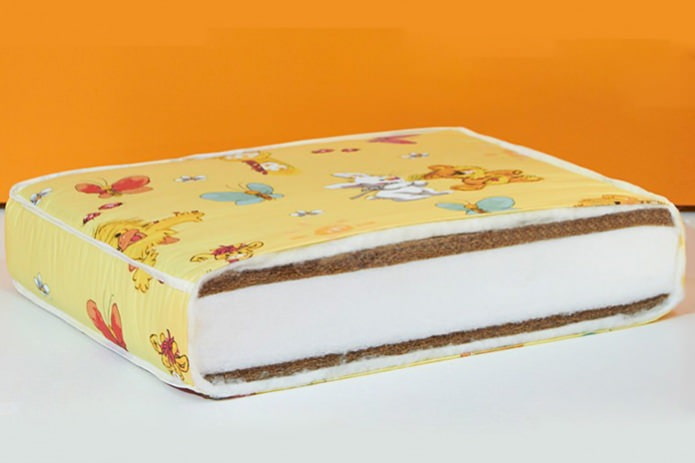

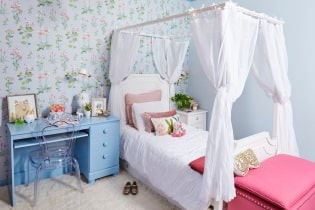 Design of a children's room for a girl
Design of a children's room for a girl Stretch ceiling in the nursery: 60 best photos and ideas
Stretch ceiling in the nursery: 60 best photos and ideas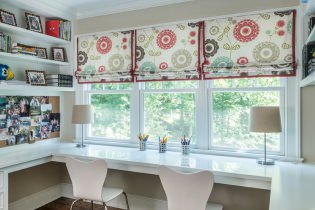 Curtains in the nursery: views, the choice of color and style, 70 photos in the interior
Curtains in the nursery: views, the choice of color and style, 70 photos in the interior The interior of a small nursery: the choice of color, style, decoration and furniture (70 photos)
The interior of a small nursery: the choice of color, style, decoration and furniture (70 photos)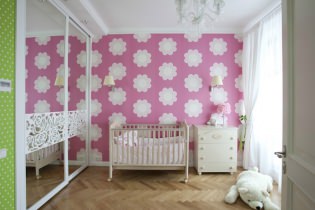 Choosing a wallpaper for a children's room: 77 modern photos and ideas
Choosing a wallpaper for a children's room: 77 modern photos and ideas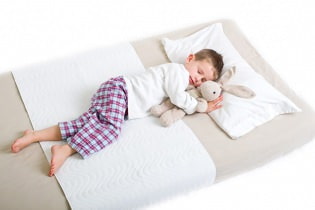 How to choose a mattress for a child from 3 years old?
How to choose a mattress for a child from 3 years old?